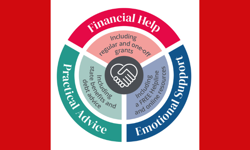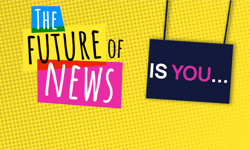MDs and publishers from the Spectator, Future, Immediate Media Co, ShortList, RBI, Briefing Media and Time Out all provided fresh ideas for media businesses in a turbulent world.
I’ve grouped my top twenty insights from the event into six categories: creating content, choosing channels, pricing packages, building communities, engaging advertisers and reinventing publishing:
CREATING CONTENT
1. Help your reader / user make a better business decision
Publishers have in the past focused on their brand, and the different incarnations of their content, but they now need to put the reader / user at the centre of the business, and build solutions not products, stated Neil Thackray of Briefing Media. In B2B markets, former media businesses are now really solutions and service businesses that help readers make better business decisions and minimise risks.
2. Save business people time and money and reduce risk
News alone can’t justify a subscription to a B2B publication. Clever publishers are developing services that fit into users’ workflow and save them time and money. David Shepherd, content director at RBI’s XpertHR described how their flowchart approach to common employment law situations makes them foolproof, reducing the risk of tribunals for subscribers, and justifying a £1000+ price tag.
3. Curation is better than search and cheaper than origination
Search alone is not a reliable method for readers to be informed on a specific topic. The traditional skills of publishers and editors: possessing a specialist understanding, selecting what’s relevant, making connections and putting information into context have a great value when applied to curating third party content. It’s also a far more cost effective strategy than originating content. The Media Briefing built a site with 126,000 indexed articles and several hundred original articles in just a year with just one full time editor.
4. Facilitate freelance and user contributions to content
Time Out had always created and checked its own entertainment listings. As it becomes a global brand, with multiple licensees and partners, it needs to make it easy for local freelances to contribute content, and for entertainment promoters, restaurants and galleries to upload their local inventory directly. Publishers need to make it easy for external contributions to be added to their site, whilst always maintaining quality control.
5. Add depth and analytics to business content
Business readers can take time to consider the implications of changes in their industry, and are less interested in news than the journalists who create it, explained former Emap CEO David Gilbertson. Publishers need to focus on the longer term trends and put recent news into context.
6. Aspire to workflow tools
David Shepherd of XpertHR encouraged B2B publishers to climb up the value chain, from news which merely informs, to analysis which interprets, guidance which advises and templates which enable. The highest level, workflow, empowers the user / subscriber to do their job more effectively and efficiently. A workflow tool differs from a mere database of content in that it is organised around work tasks, and relevant content is presented at the right point in a process, within an intuitive interface for busy managers, that doesn’t require extensive training or professional research skills.
7. Integrate digital and print production
Separate print editorial and digital teams aren’t practical: the content production process must be streamlined. Rebekah Billingsley, publishing director mobile, showed how Good Food now produce both print and app editions every month with the addition of only half a person to the team. They use a mobile platform, PressRun, which integrates with InDesign, allowing the magazine and tablet version to be created in parallel.
CHOOSING CHANNELS
8. Apple Newsstand is the new Tesco
Publishers are already seeing dramatic sales growth from being on Apple Newsstand. Duncan Tickell, MD of Immediate Media Co, quoted a 600% increase in free sample downloads, but also 150% increase in single copy sales and 125% increase in subs. Future has also seen a dramatic increase in downloads via Newsstand, according to Nial Ferguson, publishing director. UK publishers can now easily access an international market that was prohibitively costly before. But it pays to cultivate a good relationship with Apple: being featured on Newsstand provided a six-fold sales uplift for Good Food.
9. Publish content where your audience are
Be aware of how readers use different media. Time Out are adopting different strategies for publishing entertainment listings in print, on mobile, the web and even on Facebook. All digital media can link to instant bookings.
PRICING PACKAGES
10. Don’t dismiss free sample editions
Some publishers are reluctant to make their issues available free of charge. However, free sample editions on digital channels allow new readers to test and browse your magazine, just like they do in a real newsstand, and provide opportunities for advertisers to reach a wider audience. Greater awareness on digital media can help grow print circulation: Ben Greenish, MD of the Spectator, has experimented with a wide range of digital channels and believes the increased awareness has boosted print subscriptions.
11. Use back issues, repackage and repurpose
Magazine content has a longer shelf life than the newsstand environment permits. Publishers’ back numbers are proving highly lucrative; 25% of Good Food’s app sales are back issues. Once a production process is developed, tablets allow publishers to experiment with repackaging content into themed specials without the risk of print production and distribution.
12. Don’t be dragged into discounting on digital
Not everything that is on the App store needs to be under £2. Many publishers are holding their cover prices for digital magazine editions. BBC Good Food tested discounting and discovered that the extra volume didn’t justify the lower revenues. So they charge £3.99 for their iPad edition.
13. Personalise business information services to limit sharing
Traditional article-based business publications could easily be passed around. But if publishers can instead create business information services that can be personalised by the user and become part of their workflow, as in Reed’s XpertHR, then users are less likely to share their login with a colleague.
BUILDING COMMUNITIES
14. Editors should spend half their time engaging with audience
Creating and broadcasting content isn’t the whole story for editorial teams. Readers can generate highly valuable content, and editors should nurture their communities using social media and live events. Neil Thackray, co founder of the Media Briefing, explained that their editor, Patrick Smith, spends half his time on social channels, understanding what issues his audience are talking about.
15. Take every opportunity to collect reader details
Offering an incentive such as free content or a newsletter has helped Good Food and Focus acquire data on 65% of their iPad readers, providing opportunities to cross promote related titles, specials and subscriptions.
16. Bring your community together physically to network and inspire
Business people can feel isolated by technology, so publishers have an opportunity to bring their audiences together to network, transact, demonstrate, inspire, celebrate and reward their peers, colleagues and business partners. Live events provide the publisher with an insight into current preoccupations and can create valuable content.
ENGAGING ADVERTISERS
17. Sell results to advertisers not benefits
Stop selling pages, banners and stand space to commercial partners, and work out how you can help them generate leads and get new business, whether that is online, in print, on mobile or at live events. Most B2B publishers need to consider their largest advertisers as business partners, understand their marketing and business development process in detail and develop bespoke multi-channel marketing solutions with them.
18. Make it easy for advertisers to use tablet editions
Many advertisers don’t know how to make their print ads interactive. Good Food learnt that they had to provide an ad production service for their advertisers using their PressRun platform to add video and interactive content. They also provided statistics on page views, and offered opportunities to advertise in free sample editions to reach a wider audience.
REINVENTING PUBLISHING
19. Consumer media must move into transactions
Online ads on consumer websites are dying and few charge for content. Paul Shaw, head of global transactions at Time Out, explained how this independent listings publisher is now building its whole digital publishing model around transactions. Time Out has accepted that all its online content is free of charge, but is working with entertainment promoters directly to allow online ticketing on all channels: including Facebook. Niche publishers such as Magicalia, Future and Factory are building ecommerce business from their communities. Factory Media has recently developed its MPORA gear website selling sports equipment online. The Spectator has famously done well from its wine club. But publishers must tread carefully when picking categories for ecommerce.
20. Think like an insurgent: fail fast and privately
Large organisations move slowly as they have too much to lose. Founder and CEO Mike Soutar explained how start-ups like ShortList can innovate, experiment, test to destruction, abandon failures and feed the successes. In this fast moving environment, it pays to adopt insurgent thinking.
Summary
These businesses appear to be reinventing what publishing is all about, from a focus on the content and the platform, to providing a service to a community of readers that covers information, advice plus practical tools and even facilitates purchases. And at the same time offering a multi-channel marketing solution to advertisers wishing to reach that community.










